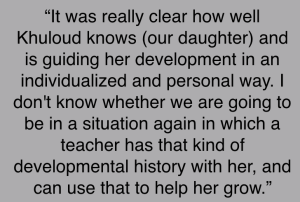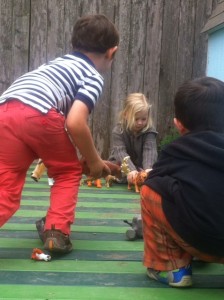Maria Montessori was an educator far ahead of her time. Working with some of Italy’s poorest families over 100 years ago, she observed how children interact with each other and the objects around them. Through years of refinement, she developed “works” with which the children learn through manipulation. Today, not only do we follow the Montessori Method, but you will see many of Dr Montessori’s original designs on our shelves. Many of these works use control of error to teach children through their own mistakes.
Four Pillars Dr. Montessori observed that children first seek a sense or order in the world, then they may develop coordination. After coordination, they have the ability to concentrate on a task. When they choose to repeat a successful task, this is a demonstration of Montessori’s independence. These we call the Four Pillars of a Montessori Education.
Establishing this sort of independence is not a quick process. As such, she developed a 3-year curriculum. Dr Montessori believed in a 3-year cycle in which two-thirds of the students remain unchanged in a given year as the oldest 1/3 is replaced by a new, younger group.

Each year at HMS we have a group which is the new, young “novice” group and a middle third which we see as the “apprentices.” Third year students are our “leaders and readers.” They have progressed through each the 4 pillars. Our third year students know the school inside-out. They are social leaders. They can solve problems on their own. And they are more than ready to move on to Kindergarten or 1st grade. (Why doesn’t this happen at most American Montessori preschools?)
Home away from home. Children quickly understand that school is a safe and relaxing place in which to work, play, and learn. A clear attitude of caring, a soft voice, and a consistency about ground rules teach the children respect for other people and for school materials. The distinctive features of our program, derived from Montessori’s child-centered philosophy, are as follows:
- Respect for the individual child and the encouragement of independence. Dr. Maria Montessori observed that allowing children to have a healthy sense of liberty within a structured environment enhances the development of self-discipline and independence in the child.
- Guidance of learning through the active use of concrete materials, based on skilled observation of each child’s development and interests.
 Emphasis upon children’s responsibility for their environment. This includes feeding and care of plants, sweeping, recycling, washing up and caring for their rooms and works. These real-life tasks, which are referred to as “practical life” activities, are an important part of our daily program.
Emphasis upon children’s responsibility for their environment. This includes feeding and care of plants, sweeping, recycling, washing up and caring for their rooms and works. These real-life tasks, which are referred to as “practical life” activities, are an important part of our daily program.- Encouragement of sustained concentration and habits through a meaningful process of learning.
- Allowing each child to experience the excitement of learning by his/her own choice.
- By pursuing individual interests, children gain an early enthusiasm for learning, which is key to becoming a truly educated person.
- Each child needs to attain an inner discipline and peace. As a school community, we strive to create and maintain an environment that encourages this to happen.
Read more: Independence at Lunchtime
Read more: Mixed-age Montessori classrooms
